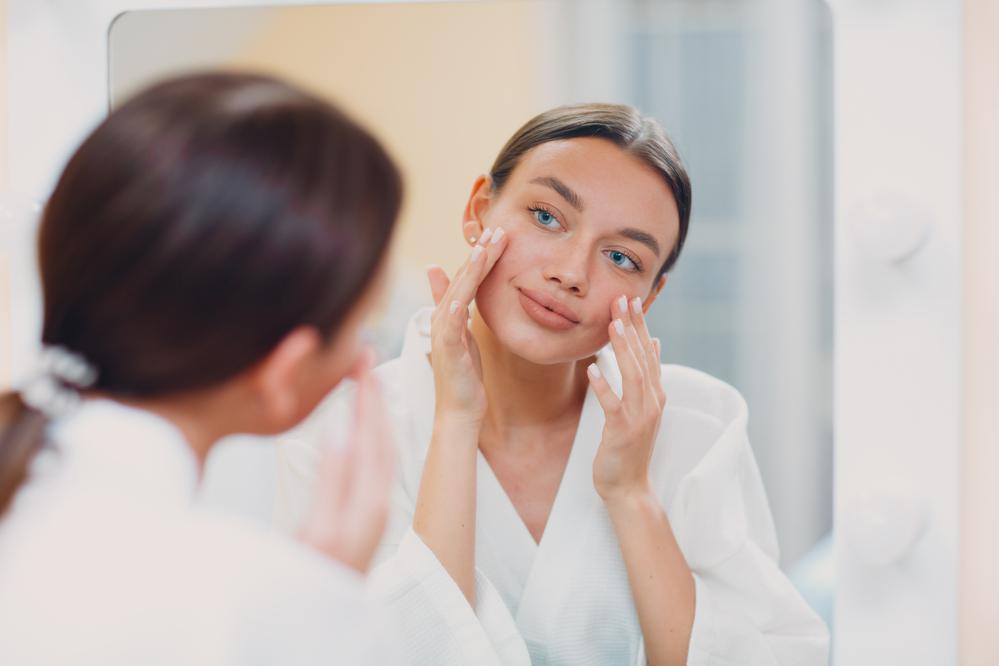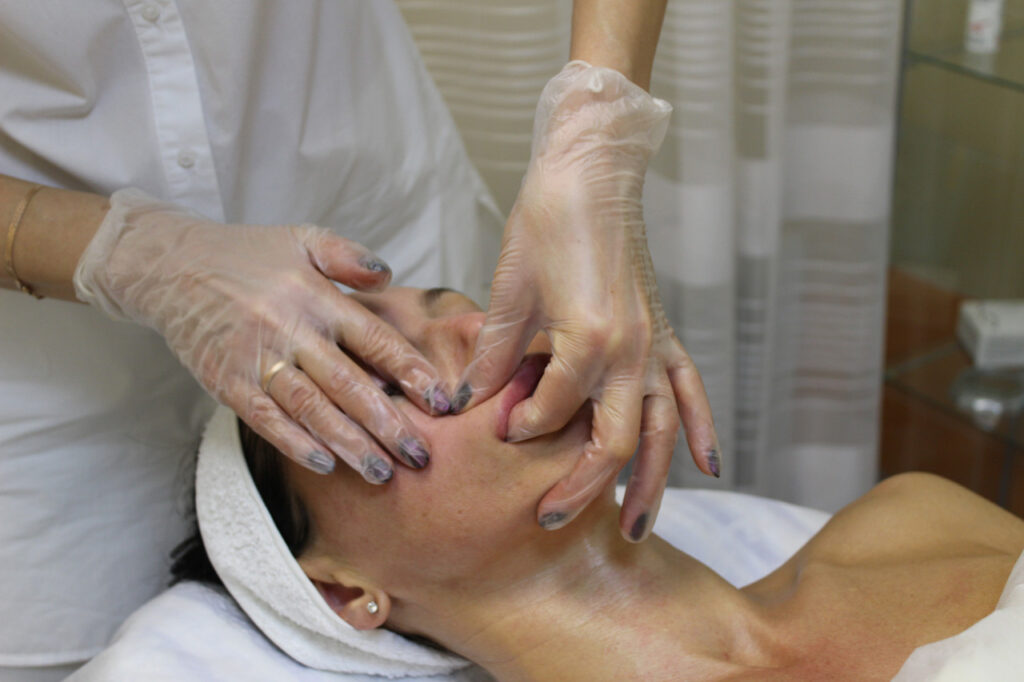Buccal (intraoral) massage is an innovative and holistic technique designed to relieve jaw tension and promote facial rejuvenation. This unique method is performed inside the mouth, targeting the surrounding tissues to achieve remarkable results. In this comprehensive guide, we’ll explore the science behind buccal massage, its benefits, and why it’s becoming a go-to solution for those looking to enhance their facial aesthetics and overall well-being.
Table of Contents
Understanding Intraoral Massage: How It Works
Buccal massage specifically focuses on the muscles inside and around the mouth. “Chewing muscles are skeletal muscles, which are the strongest muscles in our body,” explains experts. Over time, tension and spasms in these muscles can cause them to shorten, leading to noticeable changes in facial structure. The lower jaw may move upward and backward, resulting in a decrease in facial length, a tucked-in chin, drooping fat pockets around the lower jaw, and the formation of jowls. Additionally, the neck-chin angle smooths out, and a double chin may appear.
These changes are not just superficial; they involve the intricate connections between various muscles. The chewing muscles are connected to the hyoid muscles, which lose tone with age, and the nose muscles, which gain hypertorus. They are also linked to the circular muscles of the eyes and mouth. As we age, the face tends to ‘twist’ towards the center. Such spasms lead to lymphocytosis in the central fat pockets of the face and increased tissue growth, exacerbating ptosis. These are the aesthetic signs of facial ageing: pronounced and deep nasolabial folds, and drooping corners of the eyes and mouth.

The Benefits of Buccal Massage
Inner mouth massage offers numerous benefits that go beyond simple relaxation. By relieving tension from the muscle attachment points to the bones, this technique eliminates lymphatic stagnation, reduces puffiness, and tightens the skin. Here’s a closer look at what buccal massage can do for you:
- Relieves Muscle Tension: By targeting the deep-seated muscles inside the mouth, buccal massage alleviates tension and spasms that contribute to facial ageing.
- Reduces Puffiness: The technique stimulates lymphatic drainage, which helps to reduce swelling and puffiness, giving the face a more sculpted look.
- Tightens and Tones Skin: Buccal massage enhances blood circulation, which promotes skin elasticity and firmness, resulting in a youthful glow.
- Sculpts Facial Contours: Regular sessions help in reshaping and defining facial contours, lifting sagging skin and reducing the appearance of jowls and double chin.
Who Can Benefit from Buccal Massage?
While it is particularly beneficial for those who are beginning to see age-related changes in the lower third of the face, such as sagging contours and jowls, it also serves as an excellent preventive measure for younger clients. Here are some key indications for buccal massage:
- Ageing Signs: For individuals experiencing noticeable signs of ageing, such as deep nasolabial folds, drooping corners of the eyes and mouth, and a sagging jawline.
- Muscle Tension: For those with overly tense chewing muscles, which can lead to discomfort and aesthetic issues.
- Preventive Care: For younger individuals looking to maintain facial contours and prevent age-related changes.
How Buccal Massage is Performed
During a buccal massage, a therapist works on various muscles inside and around the mouth. The process involves:
- Chewing Muscle: Targeting the primary muscles used in chewing to release tension and spasms.
- Pterygoid Muscles and Nose Muscles: Addressing the attachments of these muscles to improve facial symmetry and function.
- Pyriform Aperture Muscles: Working on the muscles surrounding the nasal opening to enhance nasal structure and appearance.
- Tongue Muscles: Ensuring the tongue muscles are relaxed and free of tension to support overall facial harmony.

What to Expect During The Sessions?
The effects of buccal massage are often noticeable after the first few sessions. However, for optimal results, it is recommended to undergo a complete course of treatment. Here’s what you can expect from regular buccal massage sessions:
- Reduction of Fine Lines and Wrinkles: Buccal massage helps to smooth out fine lines and minimize deep wrinkles, giving the skin a more youthful appearance.
- Softening of Nasolabial Folds: By reducing tension in the facial muscles, buccal massage softens deep nasolabial folds and lifts the corners of the mouth.
- Enhanced Skin Radiance: Improved blood circulation and lymphatic drainage result in glowing, firmer, and more toned skin.
- Decreased Puffiness: Regular sessions help in reducing puffiness and restoring fullness to the lips and cheeks.
- Pain Management: Initial sessions may be slightly uncomfortable due to muscle tension, but as the muscles relax, the discomfort decreases.
Conclusion
Buccal massage is a powerful and effective technique for addressing both aesthetic and functional concerns related to facial muscles. By targeting deep muscle layers, it provides a comprehensive solution for reducing signs of ageing, improving facial contours, and enhancing overall skin health. Regular sessions are essential for achieving and maintaining the desired results, making buccal massage a valuable addition to any skincare routine.
If you’re looking to rejuvenate your face and achieve a more youthful appearance, consider incorporating buccal massage into your regular self-care regimen. With its myriad of benefits and holistic approach, buccal massage is more than just a trend – it’s a transformative technique that can help you look and feel your best.
References:
- Smith, J. A., & Brown, L. (2020). The Benefits of Intraoral Massage for Facial Rejuvenation. Journal of Aesthetic and Anti-Aging Medicine, 12(3), 145-159.
- Thompson, M. R. (2019). Holistic Approaches to Facial Muscle Relaxation. International Journal of Complementary Therapies, 8(2), 85-97.
- Patel, S. K., & Green, C. T. (2018). The Role of Buccal Massage in Reducing Facial Tension. Facial Plastic Surgery & Aesthetic Medicine, 4(4), 231-245.
- Davis, A. E. (2017). Intraoral Techniques for Aesthetic Enhancement. Aesthetic Surgery Journal, 37(6), 723-732.
- Lin, H. Y., & Cheng, W. (2021). Effects of Buccal Massage on Skin Tightening and Puffiness Reduction. Dermatologic Therapy, 34(5), e15021.
- Johnson, D., & Kim, S. (2022). Comparative Analysis of Facial Massage Techniques. Journal of Cosmetic Dermatology, 21(1), 15-28.
- Robinson, P. J. (2020). Understanding the Aging Process and Interventions. Geriatric Dermatology, 18(2), 102-113.
- Lewis, M. D., & Baker, A. L. (2019). Therapeutic Benefits of Intraoral Massage. Manual Therapy and Bodywork Journal, 14(4), 199-210.
- Hernandez, C., & Patel, N. (2021). Innovations in Non-Surgical Facial Rejuvenation. Journal of Clinical Aesthetics, 12(8), 43-58.
- O’Neill, J., & Walsh, R. (2022). Comprehensive Guide to Facial Massage Techniques. Dermatology and Therapy, 35(3), 456-470.